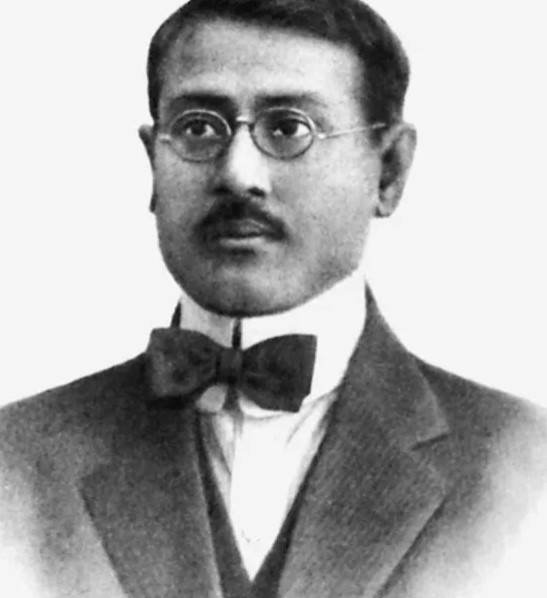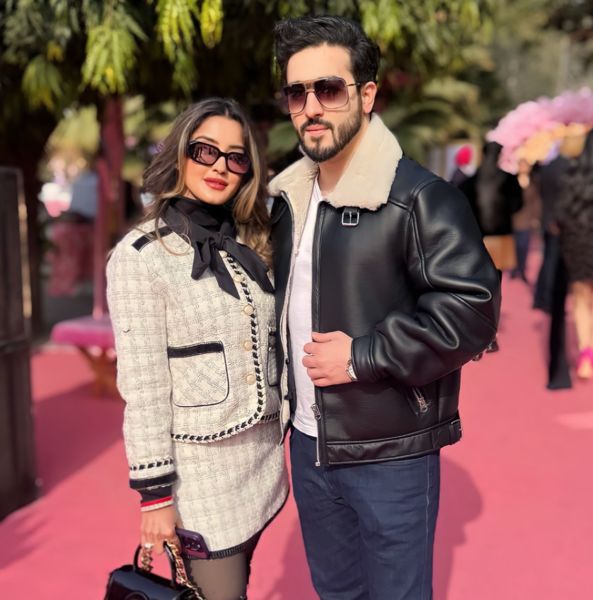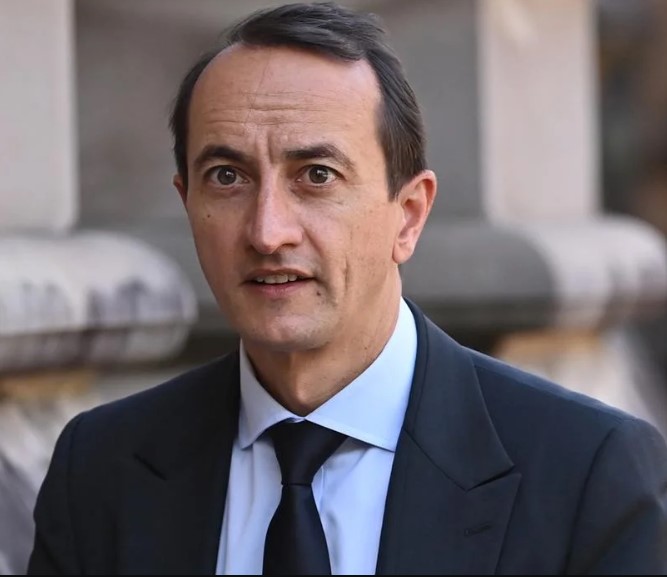Quick Info→
Age: 32 Years
Father: Chhatrapati Shivaji Maharaj
Wife: Yesubai
Some Lesser Known Facts About Chhatrapati Sambhaji Maharaj
- Sambhaji Maharaj was born into the royal Bhosale family.
- At the age of two, Sambhaji lost his mother. He was then raised by his paternal grandmother Rajmata Jijabai with the help of a woman named Dharau from Kapurhol village near Pune.
- From a young age, Sambhaji was trained in the arts of warfare, statecraft, and administration under the guidance of his father and other prominent Maratha military leaders.
- Sambhaji was very dear to his stepmother Putalabai. However, his other stepmother Soyarabai disliked him and often interfered in his political decisions.
- He had a very turbulent childhood as his father faced constant opposition from the Mughals and other neighbouring kingdoms.
- At the age of nine, Sambhaji’s life took a significant turn when he was sent to live with Raja Jai Singh I of Amber as a political hostage. Shivaji took this step to comply with the Treaty of Purandar with the Mughals that he had signed on 11 June 1665.
- As part of this arrangement, Sambhaji was made a Mughal Mansabdar, an official title that placed him within the Mughal hierarchy.
- On 12 May 1666, Sambhaji, along with his father Shivaji, was invited to the Mughal court in Agra by Emperor Aurangzeb. However, the situation turned tense when they were put under house arrest. The two managed to escape the arrest on 22 July 1666, which worsened relations between the Marathas and the Mughals.
- The Marathas and the Mughals later reconciled in 1666, maintaining cordial relations between 1666 to 1670.
- Shivaji eventually established the Maratha Empire and was crowned the Chhatrapati of the Maratha Kingdom on 6 June 1674. Sambhaji humbly welcomed all the delegates who came for the coronation ceremony at Raigad. By that time, Sambhaji Raje had gained a deep understanding of political strategies and battlefield tactics.
- Twelve days after Shivaji was crowned the Chhatrapati of the Maratha Kingdom, Jijau passed away and as Shivaji Maharaj was involved in the politics of Swarajya at that time, there was no one left to pay attention to Sambhaji.
- In his youth, Sambhaji often had differences with the experienced officials in his father’s court, particularly with Annaji Dutt, a prominent figure known for his administrative expertise.
- Although Shivaji often ignored Annaji Dutt’s occasional corruption, considering his skills, Sambhaji found it difficult to accept Annaji’s ways. This led to tension between him and several officials in the court.
- Annaji disliked Sambhaji’s interference in his work and often instigated several members of the court to disrespect him.
- As many members of Shivaji’s court opposed Sambhaji, he could not accompany his father on the campaign to South India.
- The refusal of the Ashta Pradhan Mandal to follow Sambhaji Maharaj’s orders in Shivaji’s absence led Shivaji to appoint Sambhaji as the Subedar of Shringarpur, a region in the Konkan area. Shivaji made this decision to give Sambhaji a chance to learn more about governance while also keeping him away from the conflicts in the court.
- Unhappy with Sambhaji’s irresponsible behaviour and indulgence in sensual pleasures, Shivaji imprisoned him at Panhala Fort in 1678 to control his actions. However, Sambhaji fled from the fort along with his wife and joined Diler Khan, a Mughal leader, for about a year, making a strong connection with him.
- After Shivaji returned from the southern campaign, he sent Sambhaji to Sajjangad in hopes of improving his conduct. Although, Sambhaji respected the religious practices being followed at Sajjangad, he found it difficult to adapt to the strict daily schedule.
- In December 1678, Sambhaji left Sajjangad with a small group and moved towards the Mughal cantonment in Pedgaon. On his way, he met with Mughal forces sent by Diler Khan. However, when Sambhaji learned of a plan to arrest him and send him to Delhi, he quickly returned to Raigad Fort.
- After he returned, Shivaji again sent him to Panhala Fort, where Sambhaji was kept under supervision.
- On 5 April 1680, when Sivaji died, Sambhaji was still imprisoned at Panhala fort.
- Taking advantage of the situation, his stepmother Soyrabai with the help of influential courtiers like Annaji Datto conspired to prevent him from taking the throne. They placed Soyrabai’s son, Rajaram, aged ten, on the throne.
- Soon, Sambhaji learned about it and took control of Panhala Fort on 27 April 1680 by killing the fort commander.
- He reached the Raigad Fort and took possession of it on 18 June 1680. He formally ascended the throne on 20 July 1680.
- After becoming the king, Sambhaji ordered the imprisonment of Rajaram, his wife Janki Bai and his mother Soyarabai.
- After some time, Prince Akbar, the son of Aurangzeb, and a few members of Soyrabai’s family conspired against Sambhaji. When Sambhaji came to know about it, he ordered the execution of those involved in the conspiracy including some of Shivaji’s ministers like Annaji Datto.
- Sambhaji, following in his father Shivaji’s footsteps, maintained the administrative structure and policies set by him.
- With the help of his council of eight ministers, he managed the state’s affairs and was known for his fair administration and impartial justice.
- During his reign (1684–88), Maharashtra faced severe drought, pushing Sambhaji to implement various measures to help farmers. He focused on irrigation, water storage, and promoting agricultural development. His government provided essential support like grain seeds, tax exemptions, and agricultural tools to farmers, aiding them during the drought.
- Sambhaji also encouraged agricultural expansion, ensuring that previously confiscated lands were cultivated, and efforts were made to increase the state’s agricultural revenue.
- Sambhaji, along with his ministers and officials, actively supported cultural and religious initiatives in the state. They promoted education and learning by offering land, grain, and financial support to scholars.
- His reign was marked by a series of military campaigns and conflicts, both with external and internal rivals, that defined his leadership.
- As the ruler of the Maratha Empire, Sambhaji focused on expanding his kingdom by attacking his rival territories.
- Firstly, he attacked the city of Burhanpur, which was controlled by the Mughals. In late 1680, the Maratha forces looted the city, destroyed its ports, and executed the Mughal captives. The attack sent a strong message to the Mughals.
- In 1681, Aurangzeb’s son, Akbar, fled the Mughal court and sought refuge with Sambhaji, who provided him asylum.
- While many of Sambhaji’s ministers conspired to replace him with his brother Rajaram, Sambhaji uncovered the conspiracy and executed those involved in it.
- Although Sambhaji had differences with Akbar, he hosted him for five years, hoping to receive his support one day. However, their alliance eventually failed, and Sambhaji helped Akbar flee to Persia.
- In 1682, the Mughals launched a siege of the Maratha fort of Ramsej. Despite multiple attempts, including the use of mines and wooden towers, the Mughal forces failed at their operations.
- The Maratha forces led by Sambhaji successfully defended the fort using guerilla tactics and strategic retreats which prevented the Mughals from gaining significant victories.
- Frustrated by his failure in the Deccan, Aurangzeb turned his focus to surround the Maratha capital at Raigad. However, the Marathas successfully defended their territory by defeating Mughal forces in the Konkan region in 1684, forcing Aurangzeb to shift his attention from the Marathas to other regional powers.
- Sambhaji continued Shivaji’s campaign against the Siddis, who were reduced to the fortified island of Janjira by Shivaji. Sambhaji made multiple attempts to win over the Siddis. However, the Marathas failed to defeat them.
- Sambhaji also attempted to build a causeway to the island but had to leave the project when the Mughal forces threatened his capital Raigad.
- Later, Sambhaji began a campaign against the Portuguese in Goa to cut off their support for the Mughals. Although the Marathas captured several Portuguese forts, they were forced to withdraw when the Mughal army intervened.
- In 1684, Sambhaji signed a treaty with the English for military support, which helped strengthen the Maratha forces, particularly in artillery and gunpowder.
- Sambhaji also made an attempt to extend the Maratha influence in southern India by targeting the Wodeyar Kingdom of Mysore. He initially attempted to invade the Kingdom in 1681 but failed. Later, when the Wodeyars aligned with the Mughals, Sambhaji invaded Mysore in 1686, in an effort to expand the Maratha Empire.
- As the ruler of the Maratha Empire, Sambhaji faced several internal challenges, particularly from the Maratha Deshmukhs, who were courted by the Mughal Empire. Some families, such as the Mane, Shirke, and Yadav, became loyal to the Mughals, complicating Sambhaji’s governance.
- After the key Maratha commander Hambirrao Mohite was killed in the Battle of Wai in 1687, many Maratha soldiers began leaving the Maratha forces.
- Soon, Sambhaji, along with 25 of his counsellors, was captured at Sangameshwar by the Mughal forces of Ganoji Shirke and Muqarrab Khan. Sambhaji’s close friend Kavi Kalash was also captured with them.
- The Mughals then took them to Bahadurgad in Ahmednagar District, where Sambhaji and his friend Kalash were horribly humiliated and tortured by parading them wearing clown’s clothes.
- Sambhaji was eventually executed on 11 March 1689 in Tulapur upon the banks of the Bhima river near Pune. While some sources claim that Sambhaji and Kavi Kalash were blinded, mutilated, and ultimately executed by beheading, others state that the Mughals ripped him out from the front and back with wagh nakh and also chopped his body with a weapon. The pieces of his body were either thrown into a river or cremated, with some stating it was fed to dogs.
- There are also different accounts for the reasons for his execution. The Mughals suggest that Sambhaji was tortured for refusing to surrender his forts and for insulting the Mughal emperor and Islam, while the Marathas claim that he was executed after refusing to convert to Islam, declaring he would only do so if Aurangzeb offered his daughter’s hand in marriage.
- Despite facing significant external and internal challenges, Sambhaji’s leadership in defending the Maratha Empire from Mughal dominance and his military campaigns against various regional powers remain key elements of his legacy.
- After the assassination of Chhatrapati Sambhaji, his half-brother Rajaram I was made the next Chhatrapati of the Maratha empire.
- Shortly after Sambhaji’s death, the Mughal army captured Raigad Fort. Sambhaji’s wife Yesubai, son Shahu, and Sambhaji’s stepmother Sakvarbai were taken into Mughal custody.
- Sambhaji’s son Shahu, who was only seven years old at the time, was put in prison by the Mughals for 18 years until Aurangzeb died in 1707.
- After his release, Shahu fought a brief succession war against his aunt Tarabai, who claimed the throne for her son, Shivaji II.
- Sambhaji’s wife Yesubai was kept in prison by the Mughals to ensure Shahu’s compliance with his release terms, but she was freed in 1719 when the Marathas grew stronger under Shahu and Peshwa Balaji Vishwanath.
- Sambhaji Maharaj was a well-educated man and a scholar of the Sanskrit language. He was fluent in several languages besides Marathi.
- He was educated by Keshav Pandit, an expert in Sanskrit literature, Hindu jurisprudence, and the Puranas. Keshav Pandit also introduced Sambhaji to various fields of science and music.
- Sambhaji was good at literature and had authored several books including Budhbhushanam (Sanskrit), Nayikabhed (Hindustani language), Saatsatak (Hindustani language), and Nakhshikha (Hindustani language).
- Many films and TV shows based on the life of Sambhaji have been produced in India. Some of them include Chhatrapati Sambhaji (1925) by Narayanrao D. Sarpotdar, Chhatrapati Sambhaji (1934) by Parshwanath Yeshwant Altekar, Swarajya Rakshak Sambhaji – TV Series (2017–2020) by Vivek Deshpande and Kartik Rajaram Kendhe, Chhatrapati Sambhaji (2024) by Rakesh Subesingh Dulgaj, Shivrayancha Chhava (2024) by Digpal Lanjekar, Shivrayancha Chhava (2024) by Digpal Lanjekar, Dharmarakshak Mahaveer Chhatrapati Sambhaji Maharaj: Chapter 1 (2024) by Tushar Shelar, and Chhaava (2024) by Laxman Utekar.














